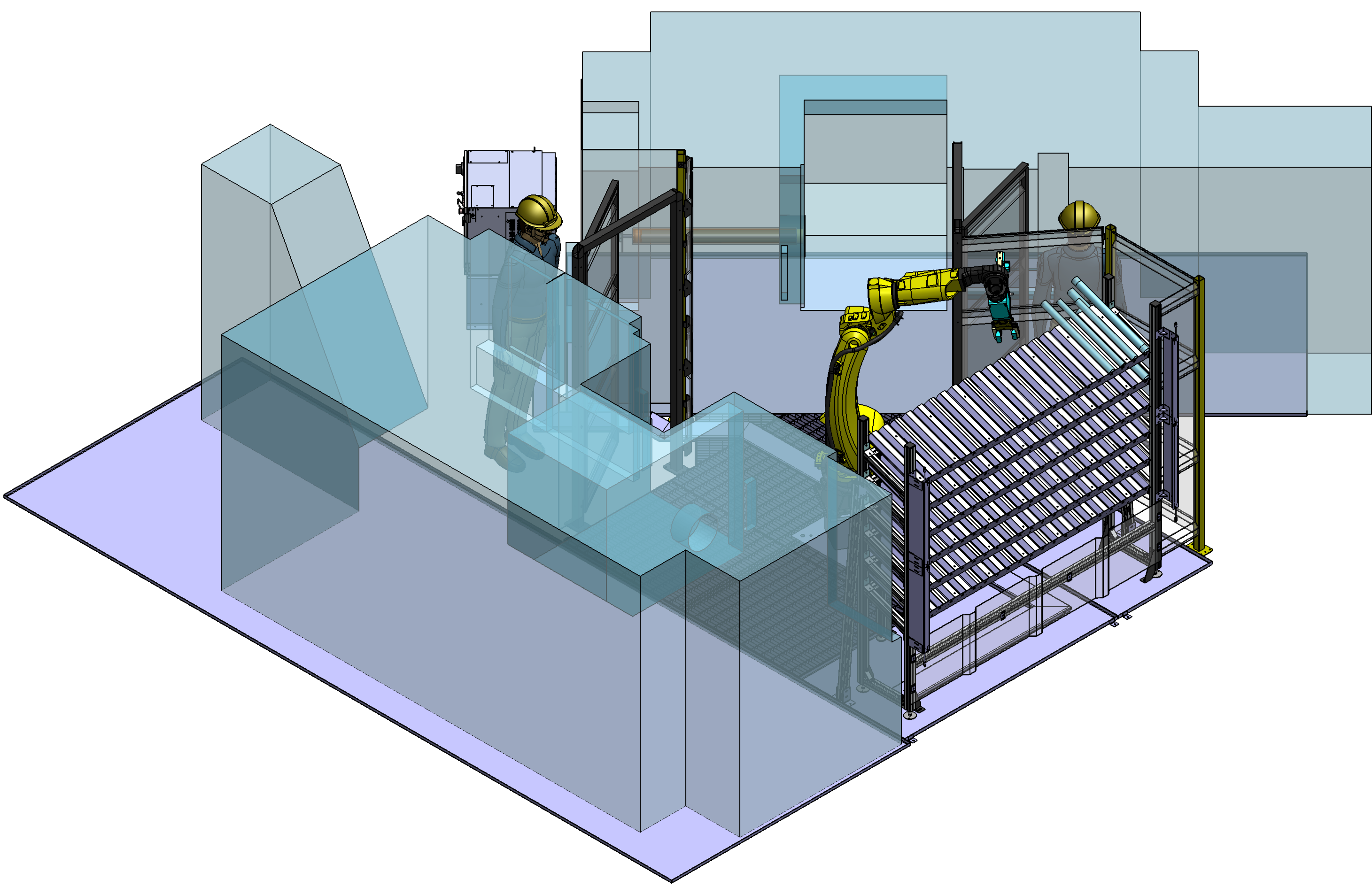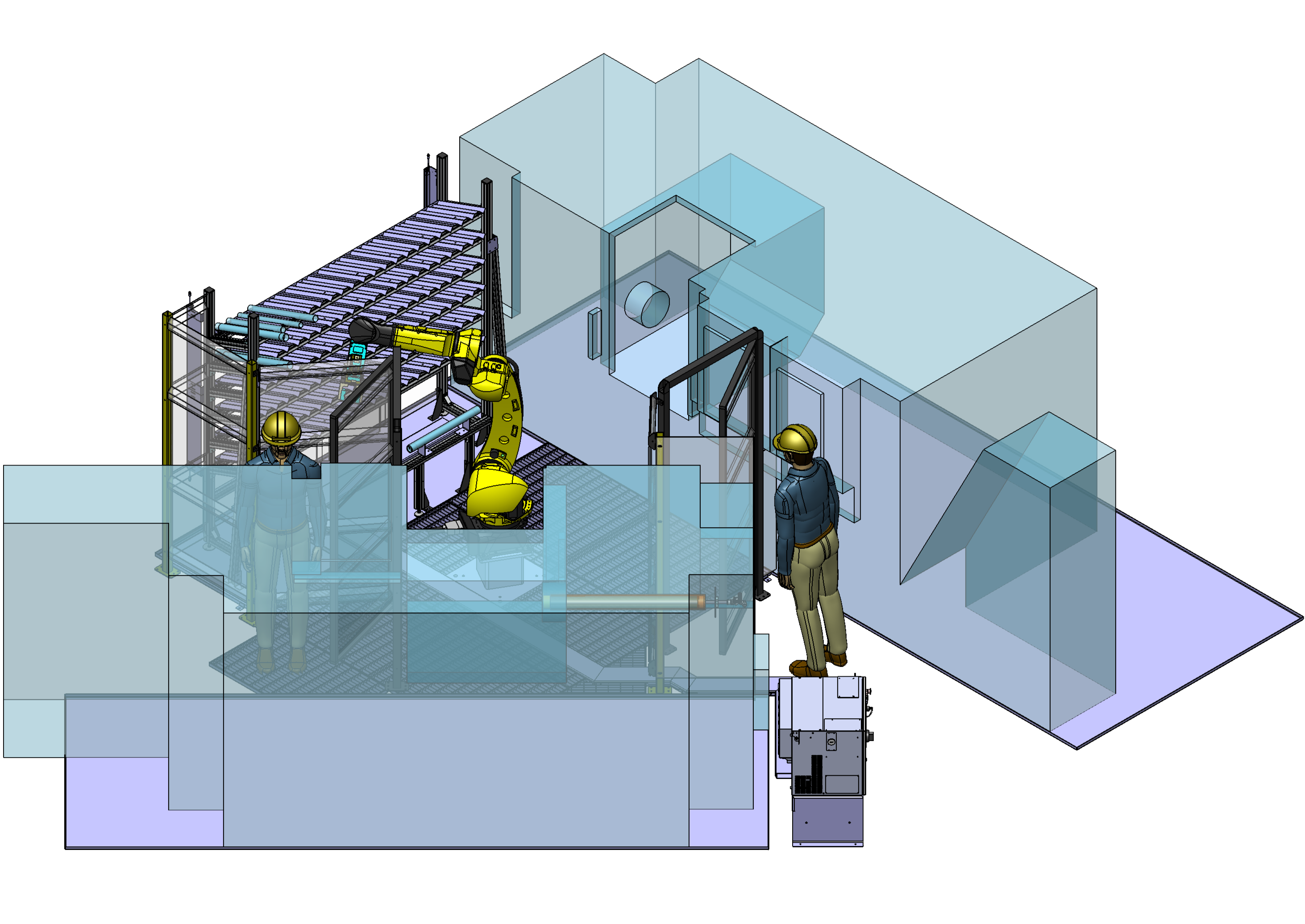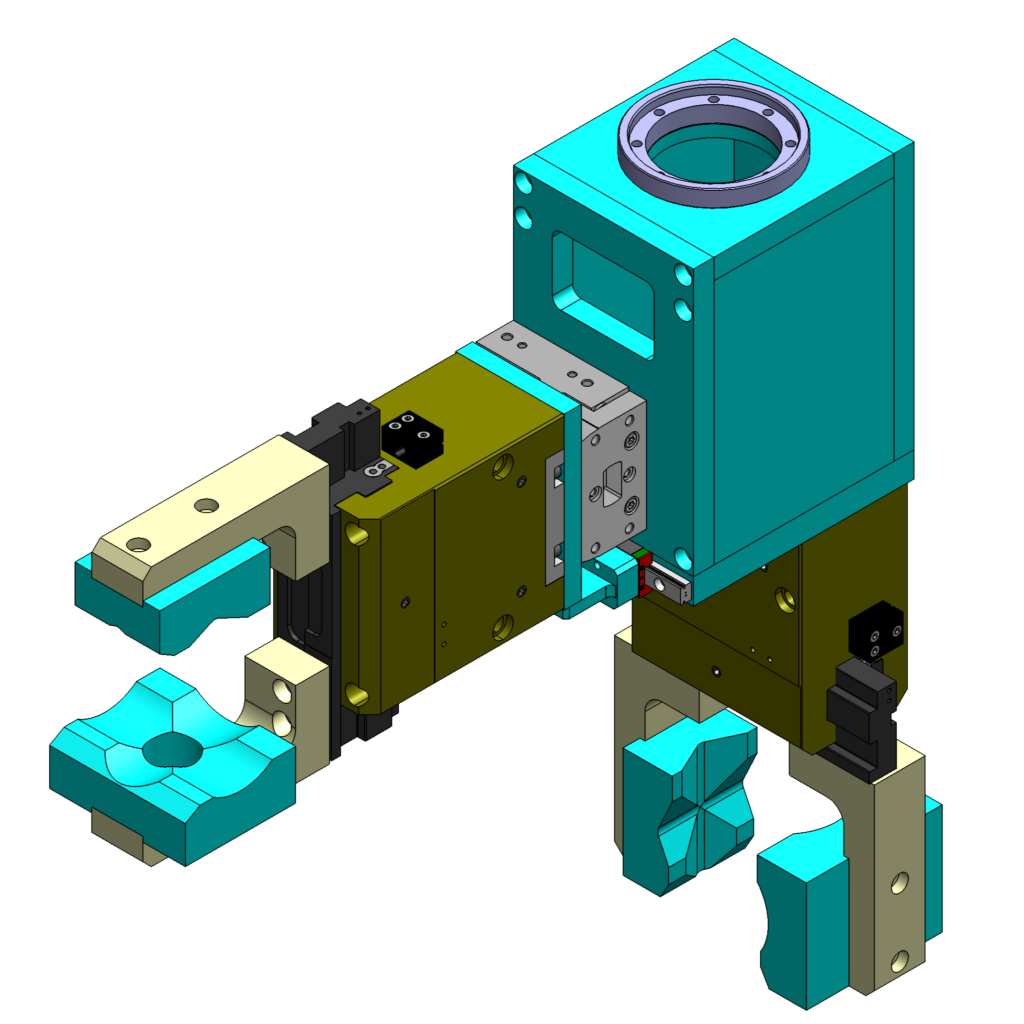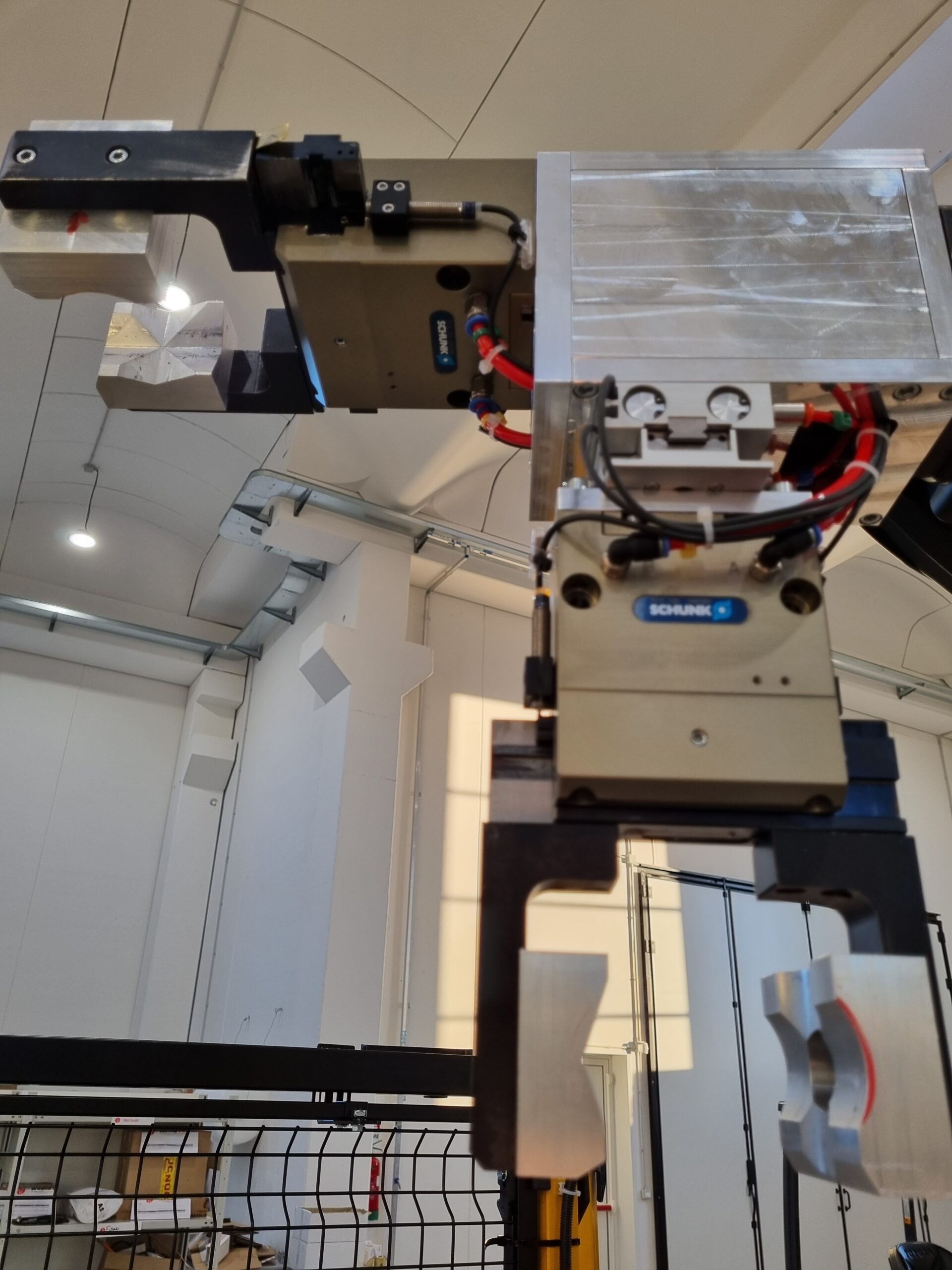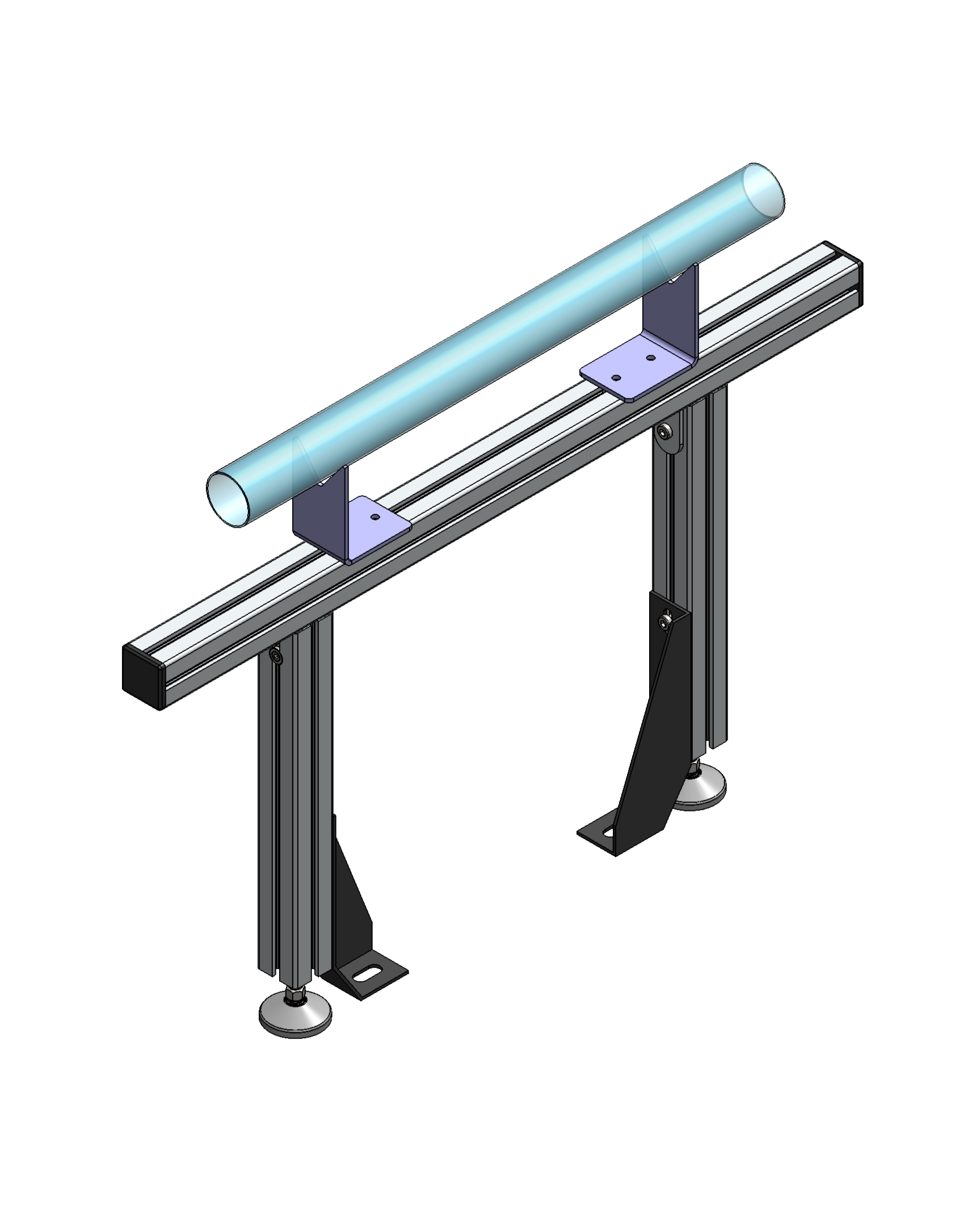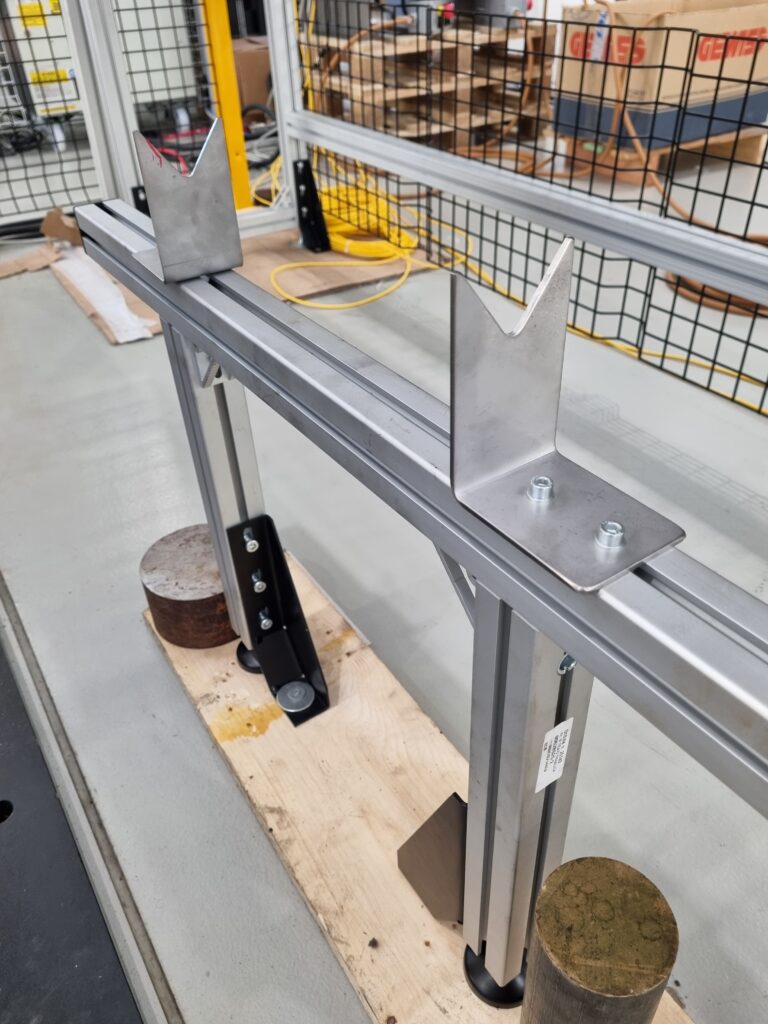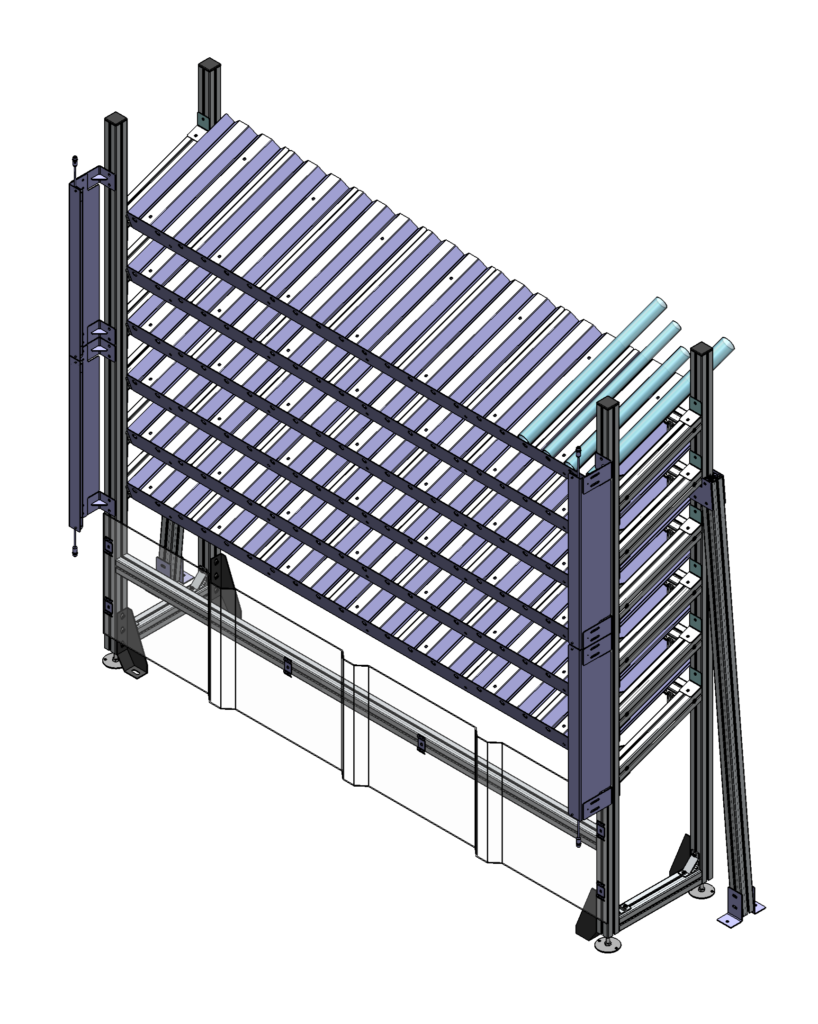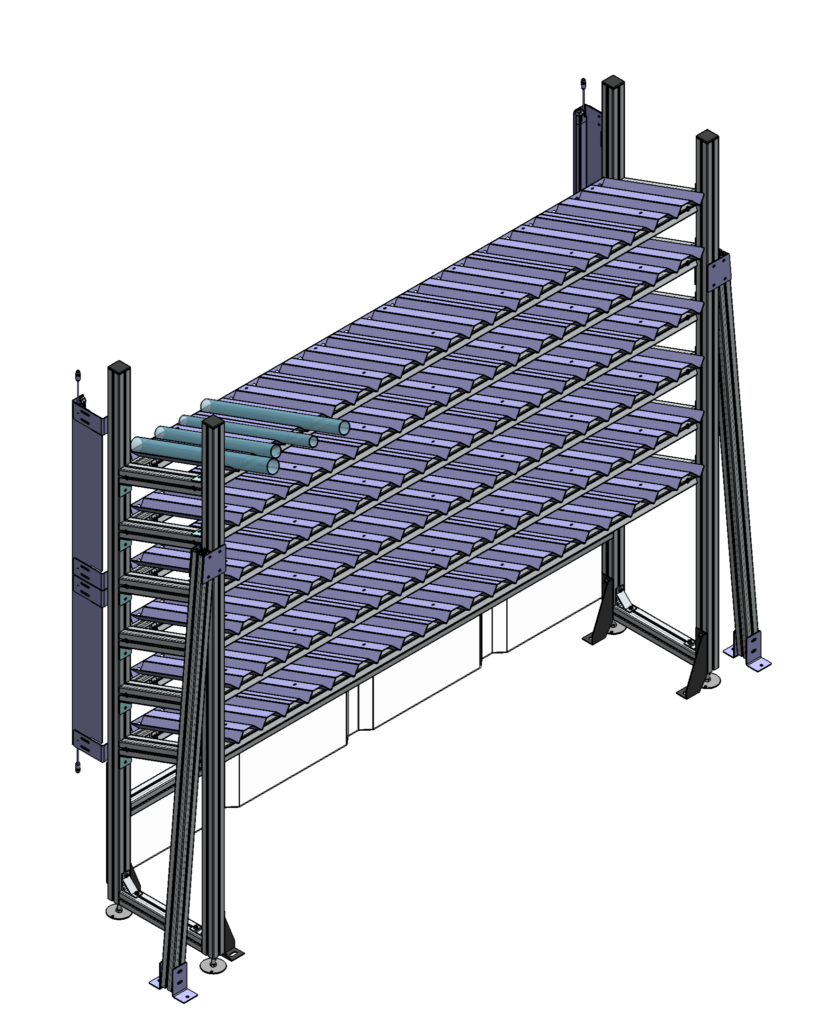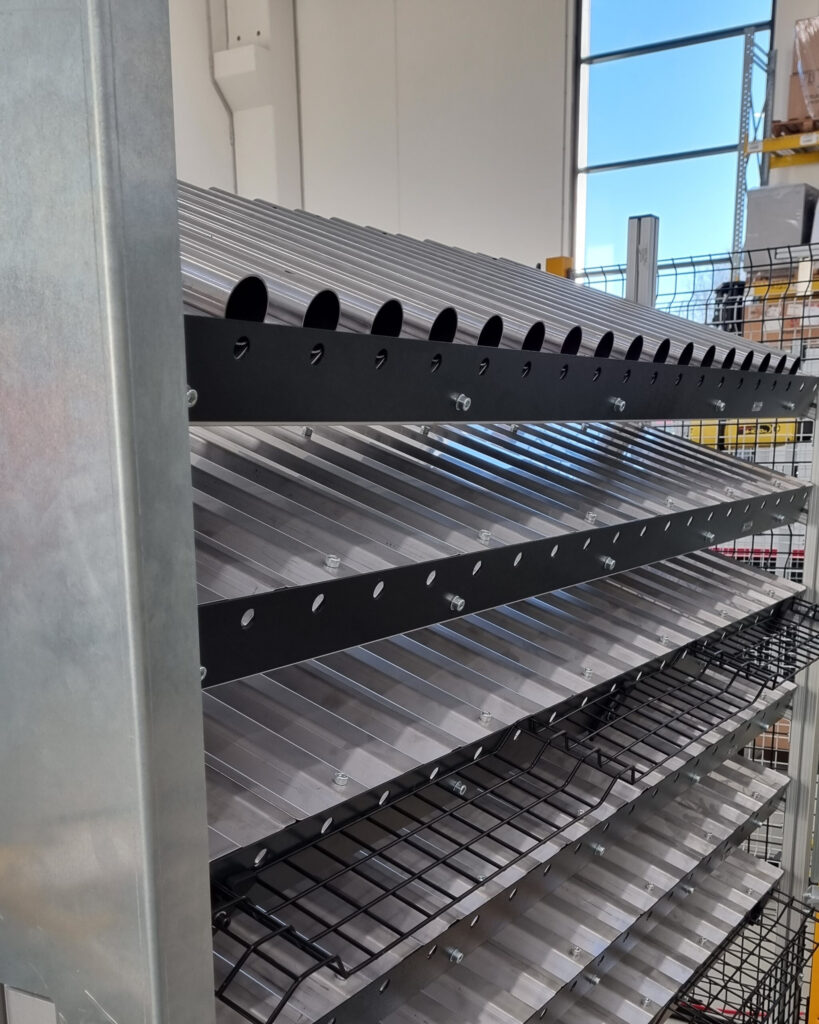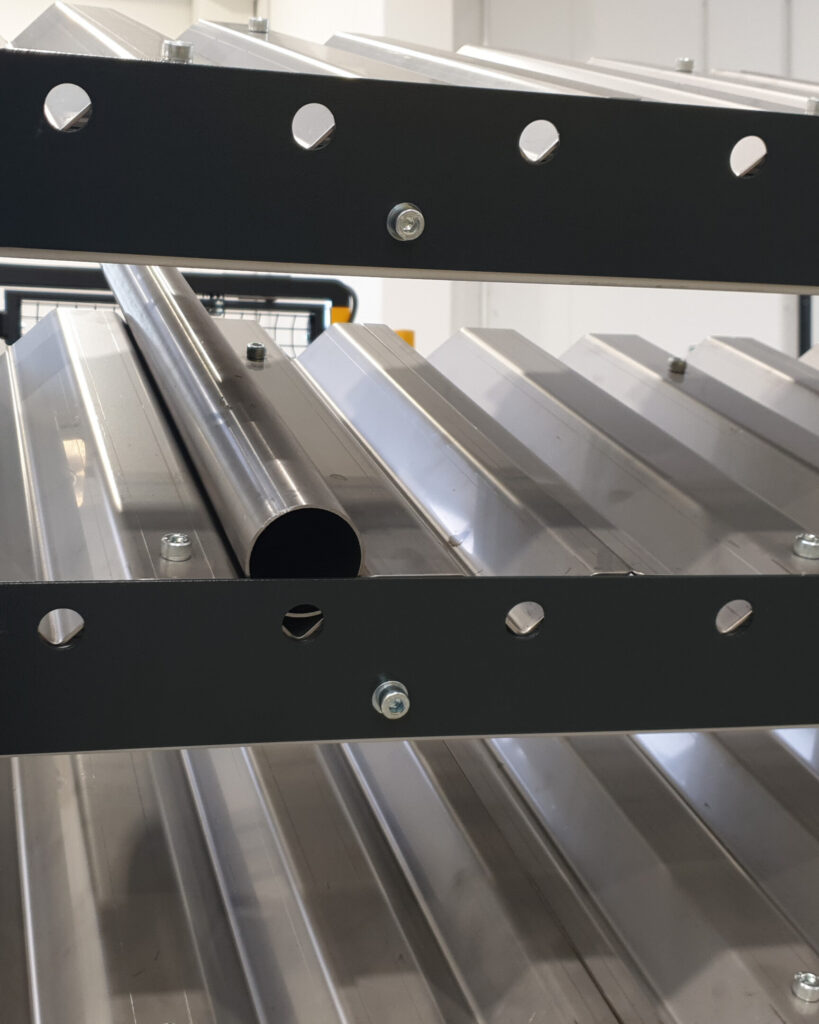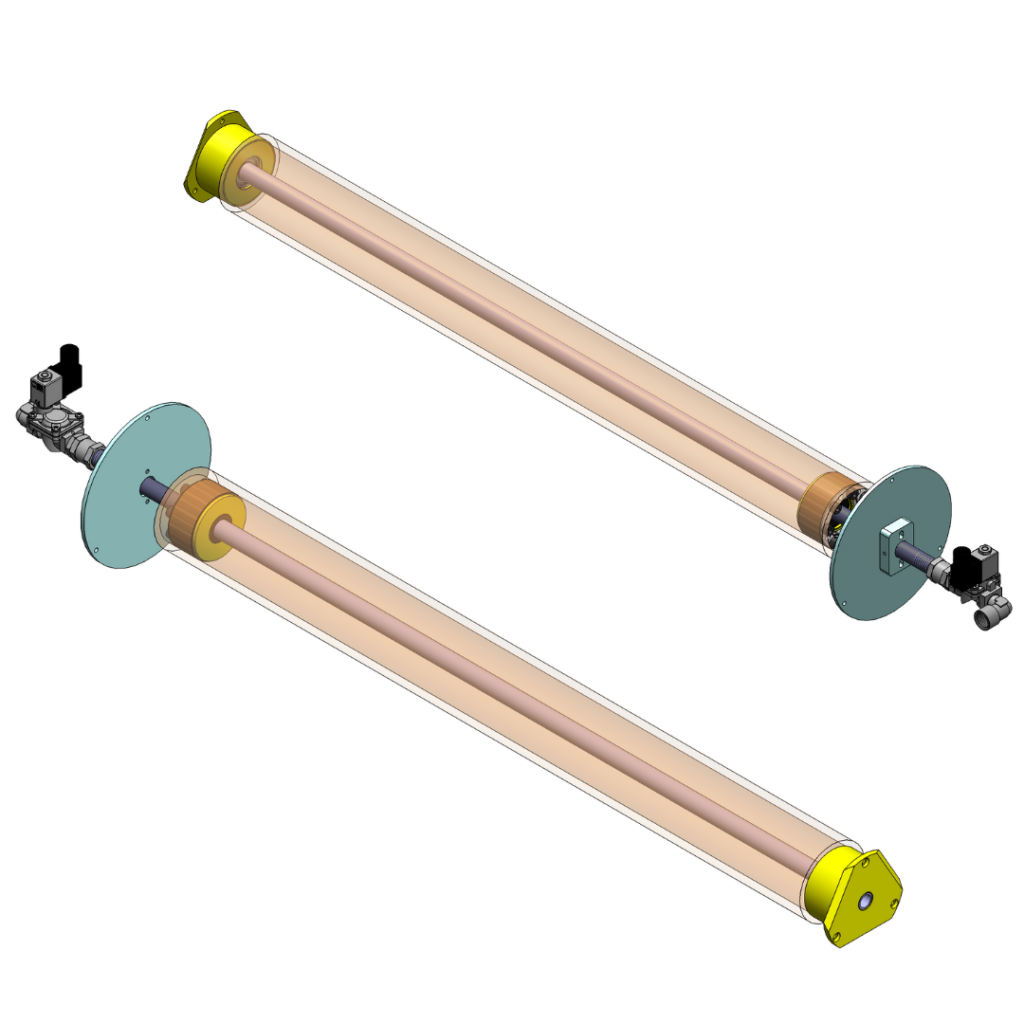Since 1966, Cerma has been a leader in precision mechanics, specialising in CNC turning, milling and grinding.
The decision to integrate one of our fully customised RoboFeed models into its machinery fleet was driven by the need to optimise space, while ensuring employee safety, and also to allow the robot to work in perfect synergy with the two machining centres, Doosan Puma 2600 LM and Doosan Puma GT2600. This integration significantly reduced the cycle time from 1 minute and 30 seconds to just 60 seconds.
SOLUTION: ROBOFEED CUSTOM
After the initial meeting with the customer, the Technical Team developed a robotic cell featuring a FANUC M20Id/25 25kg Robot, capable of picking up and machining pipes of various diameters and lengths, with a maximum reach of 1831 mm.









